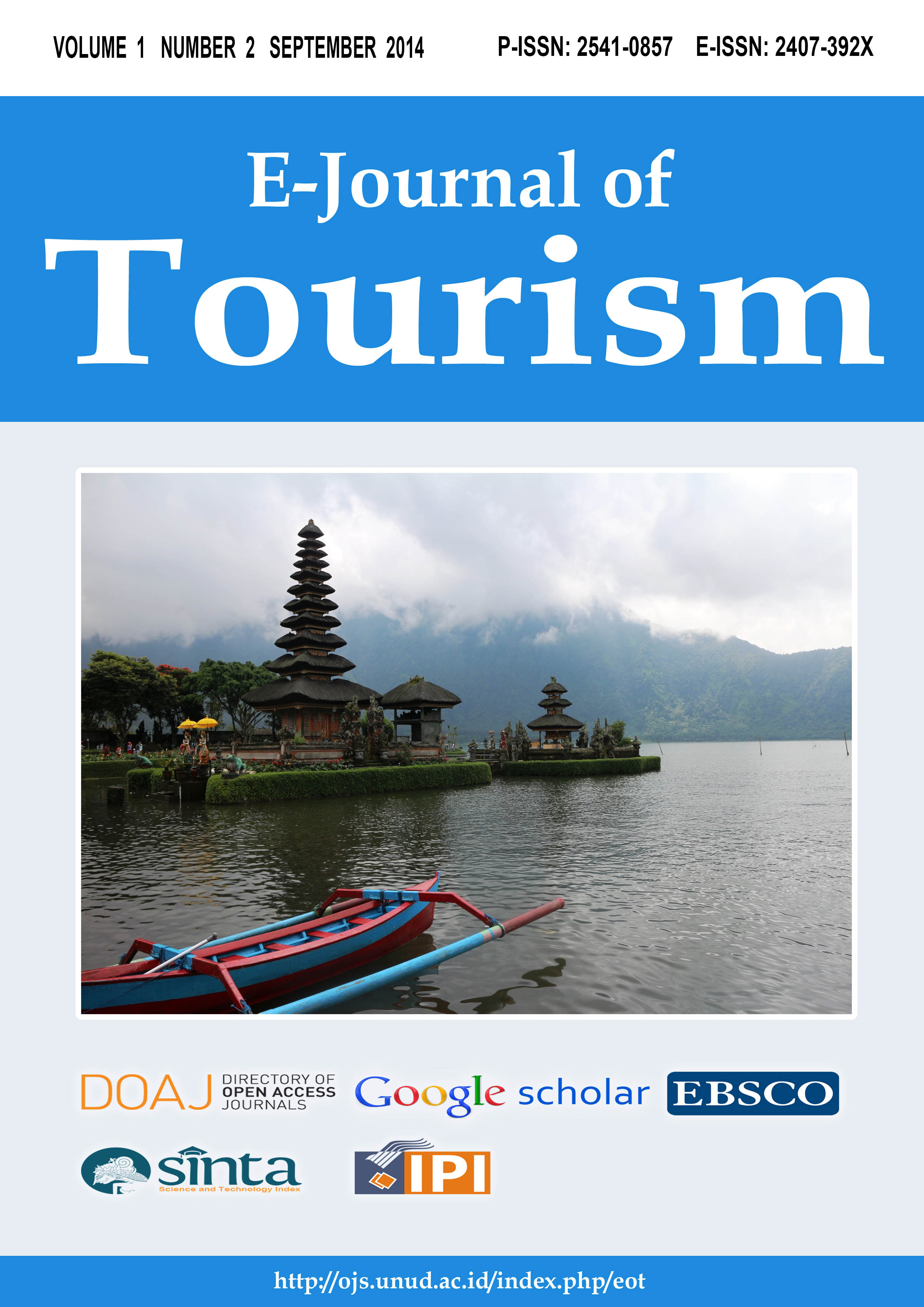Destination Management and Imaging Kintamani towards Sustainable Tourism
Abstract
Kintamani destination has become a forerunner to the development of tourism in Bali. The last few years the brand Kintamani Destinations increasingly unpopular. This study aims to explain the paradigm shift and the role of management Kintamani Destinations in shaping the quality of service, image, satisfaction, and visitor’s loyalty integrated manner affecting the sustainability of tourism. Management acts as a service provider consisting of stakeholders. Research on management aspects (supply side) has been implemented in the first phase qualitatively through depth interview. In stage II, conducted quantitative research on aspects of service quality, image, satisfaction and loyalty of visitors to Kintamani using SEM (Structural Equation Modeling). By accidental sampling questionnaire conducted to 250 tourists who visit Kintamani Destinations. Later in the third stage, verify the relationship of service quality, image, satisfaction, and loyalty to the sustainability of tourism in Kintamani through Focus Group Discussion (FGD). The findings of this research is the paradigm and the role of stakeholders in the destination management affects the quality of services provided in Kintamani. Aspects of quality of service, image, satisfaction significantly affect the loyalty of tourists visiting Kintamani. The four aspects are directly determine the sustainability of tourism in Kintamani. The novelty of this research is both, from the aspect of supply and demand, destination management, service quality, imaging, and satisfaction rating affects loyalty, as well as an integrated manner affecting the sustainability of Kintamani tourism Destinations. These research results bring to all stakeholders that the management of destinations and image dominant influence on the sustainability of Kintamani Tourism Destinations. Thus, these aspects will be the focus of stakeholders in maintaining and developing Kintamani Tourism Destinations. Kintamani Destinations consider as a Tourist Destination Region Lodging (DTWK) with various constraints and limitations. The research on other aspects that critically affect the continuity of Kintamani Tourism Destination needs to be done further.
Downloads
Keywords

This work is licensed under a Creative Commons Attribution 4.0 International License.
The copyright of the received article shall be assigned to the journal as the publisher of the journal. The intended copyright includes the right to publish the article in various forms (including reprints). The journal maintains the publishing rights to the published articles.




















